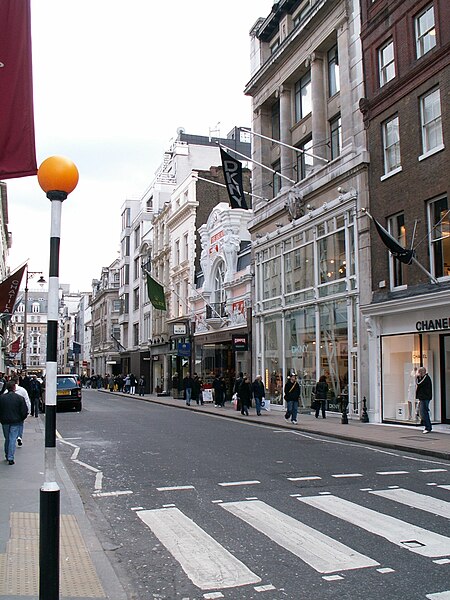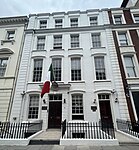Bond Street

Bond Street in the West End of London links Piccadilly in the south to Oxford Street in the north. Since the 18th century the street has housed many prestigious and upmarket fashion retailers. The southern section is Old Bond Street and the longer northern section New Bond Street—a distinction not generally made in everyday usage. The street was built on fields surrounding Clarendon House on Piccadilly, which were developed by Sir Thomas Bond. It was built up in the 1720s, and by the end of the 18th century was a popular place for the upper-class residents of Mayfair to socialise. Prestigious or expensive shops were established along the street, but it declined as a centre of social activity in the 19th century, although it held its reputation as a fashionable place for retail, and is home to the auction houses Sotheby's and Bonhams (formerly Phillips) and the department store Fenwick and jeweller Tiffany's. It is one of the most expensive and sought after strips of real estate in Europe.
Excerpt from the Wikipedia article Bond Street (License: CC BY-SA 3.0, Authors, Images).Bond Street
New Bond Street, City of Westminster Mayfair
Geographical coordinates (GPS) Address Nearby Places Show on map
Geographical coordinates (GPS)
| Latitude | Longitude |
|---|---|
| N 51.5126 ° | E -0.1448 ° |
Address
New Bond Street 125
W1S 1DY City of Westminster, Mayfair
England, United Kingdom
Open on Google Maps







